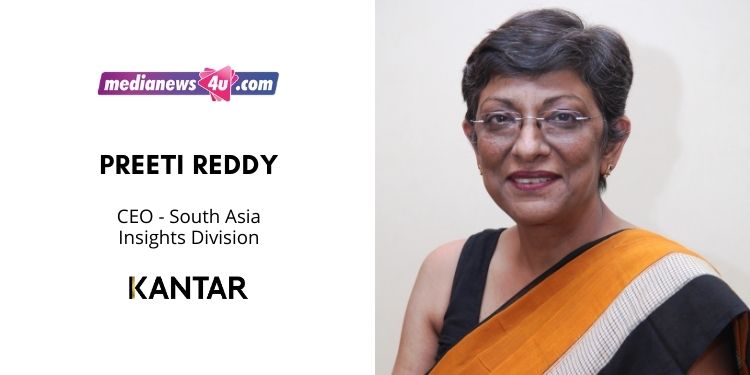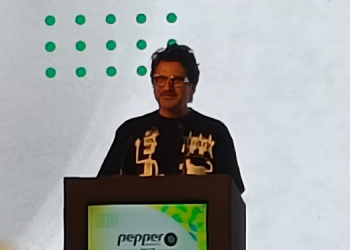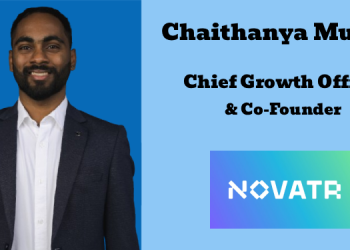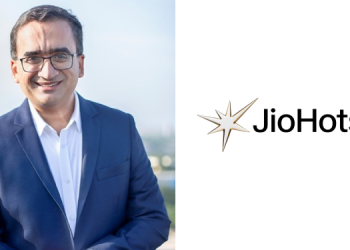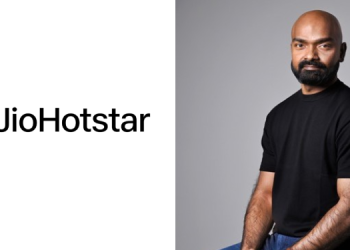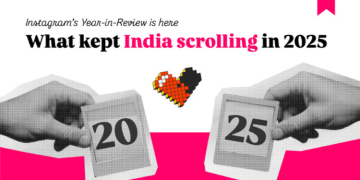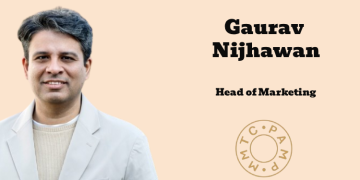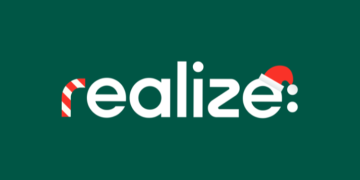WPP & Kantar launched the seventh edition of the BrandZ, Top 75 Most Valuable Indian Brands 2020 report, it focused on the theme of “Repurposing Brands for the Future” with a strong insight to consumer trends noticed during the pandemic, leaving brands to rise to challenges presented by such unprecedented times.’
Preeti Reddy, CEO – South Asia, Insights Division, Kantar, spoke to us on various issues, from brands working to adapt quickly, with innovation and agility and helping to fuel growth, ADEX growth in the next quarter, to tone of communication, to growth in Digital and sustainability in the Indian Context.
The Pandemic has hit ADEX spends, how are you seeing the recovery in the next quarter?
We are seeing recovery for our FMCG clients. The growth is coming back and it may not be a galloping growth but they are seeing green shoots. We are also seeing growth in the Rural as they have had a good monsoon and money has been put into rural India. But, this has vitiated a little by the fact that there are so many job losses and migrant workers who do not have jobs now. It is not going to be great growth.
Our other clients in auto, alcohol and non-essential kind of categories are not going to see much growth in the next quarter. It is largely FMCG that is holding it up to some extent. Also seeing some growth in Auto for used cars. As people are coming back, they are becoming more conscious of health, Social distancing etc., and with no public transport they feel personal transport is essential. Affordability remains an issue but I think used cars are seeing some growth which is different from the maim Auto sector, which for the past two or three years has been in the doldrums. A little bit of that is coming back. There are many sectors where actually, you will have to wait for a much longer for growth to come, like eating out, travel & tourism etc.
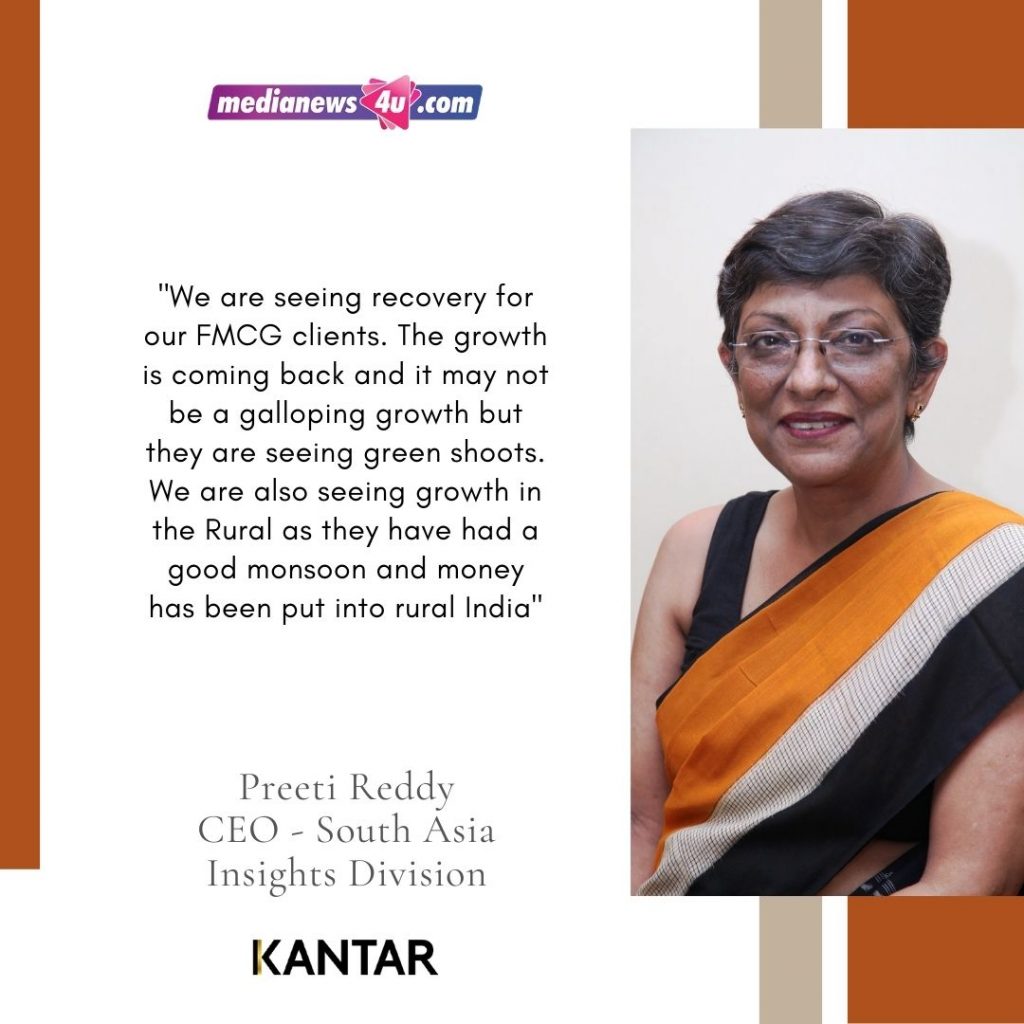
What should be the tone of communication for brands?
That is an interesting question. The thing is that the brands I don’t think they have got it completely right so far. Brands appreciate that it has to be a different tone, but what that tone is, is not yet clear. What we have been telling our clients based on work that we have done is that, it is an unique balance of, empathy and you have to have that emotional connect, but you also have to give them practical utility.
The expectations from the brand have evolved from providing emotional support and emotional sucker to practical utility. Trust has become very important, trust was always important, but we are seeing and we have been doing this barometer test running throughout COVID. That has shown us that being a trusted source of information, as well as being practical, realistic and helping consumers in their everyday lives, is what consumers are wanting. It is quite clear that advertising cannot be the same, like it was pre crisis.
Consumers cannot really tell us what it should be like, but they would like to see what is it that brands were doing to help the community during the crisis? What is it that they did to help employees during the crisis and what did they do to help you around the crisis and the communication around that. Brands need to have good creativity to balance the current context with relevant functionality. Let me give you an example. Center Fresh, a new creative which says,’ stay fresh behind the mask’. I think that is perfect, it is functional and it is creative. It is aligned to the brand values as well. Brands have to remain contextual, remain true to strategy. Amul has been doing a great job, it has always believed in responsible advertising.
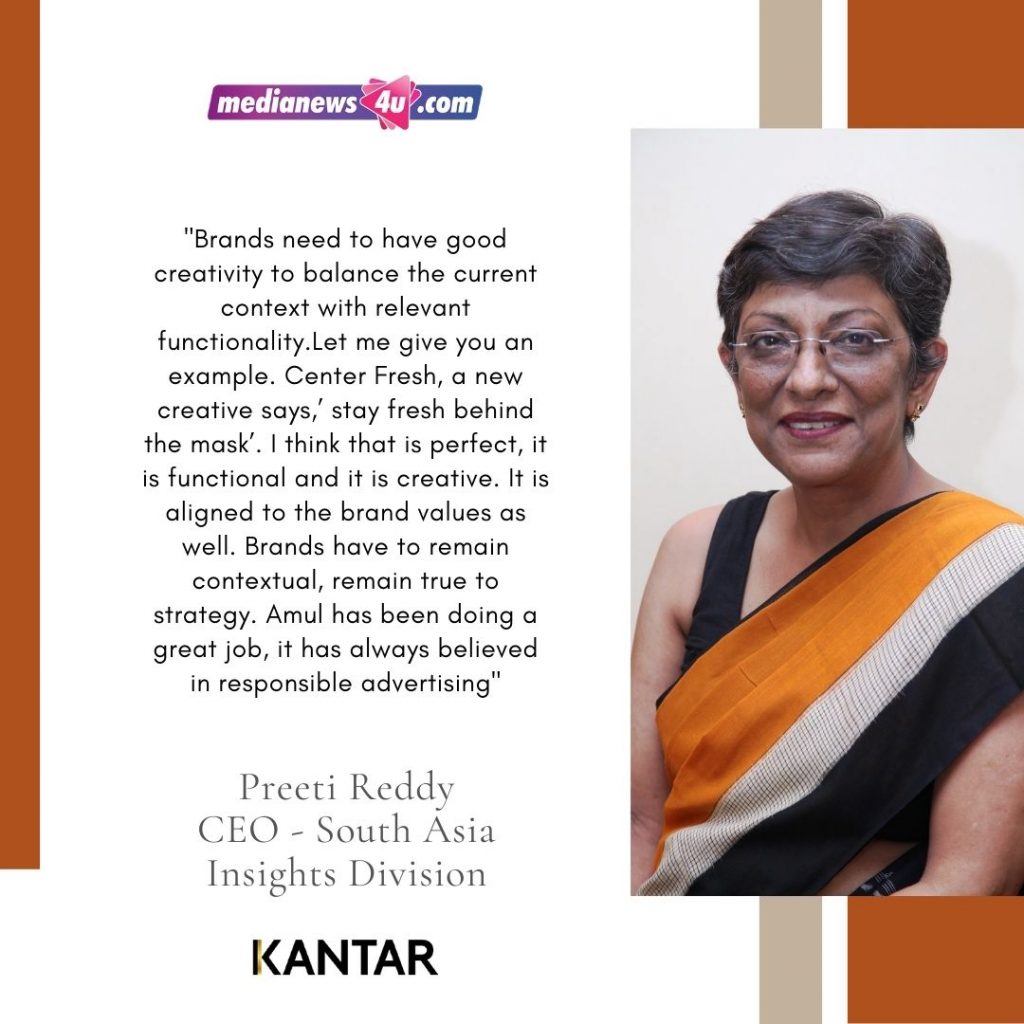
The pandemic is ushering in a new normal, WFH and seeing an increased amount of digital spends? How will the advertising pie look in the new normal?
We will see a lot more digital advertising. The spends on TV will continue as people are at home but there is a shift from TV to OTT, mobile etc. some of those media might change but I think digital and direct to consumer through mobile etc. is poised to grow.
Will local brands now more be in demand?
The phrase,’ vocal for local’ has actually struck a chord. The only thing is that the Indian consumer doesn’t really know what a local brand is and what a foreign brand is. I think now they have started to recognize that some brands are Chinese, but they don’t know for instance that Unilever is not a local brand, but it is as Indian it can be. A brand that actually appeals to, your ethnic origins will do well, Amul for instance, is a classic example.
I think I also have to caveat this by saying that Indian consumers are not likely to pay more for a brand that is local. That local has to be handled a little carefully. One is the awareness of what is local, the other is the value that they see in local may not translate into premium pricing.
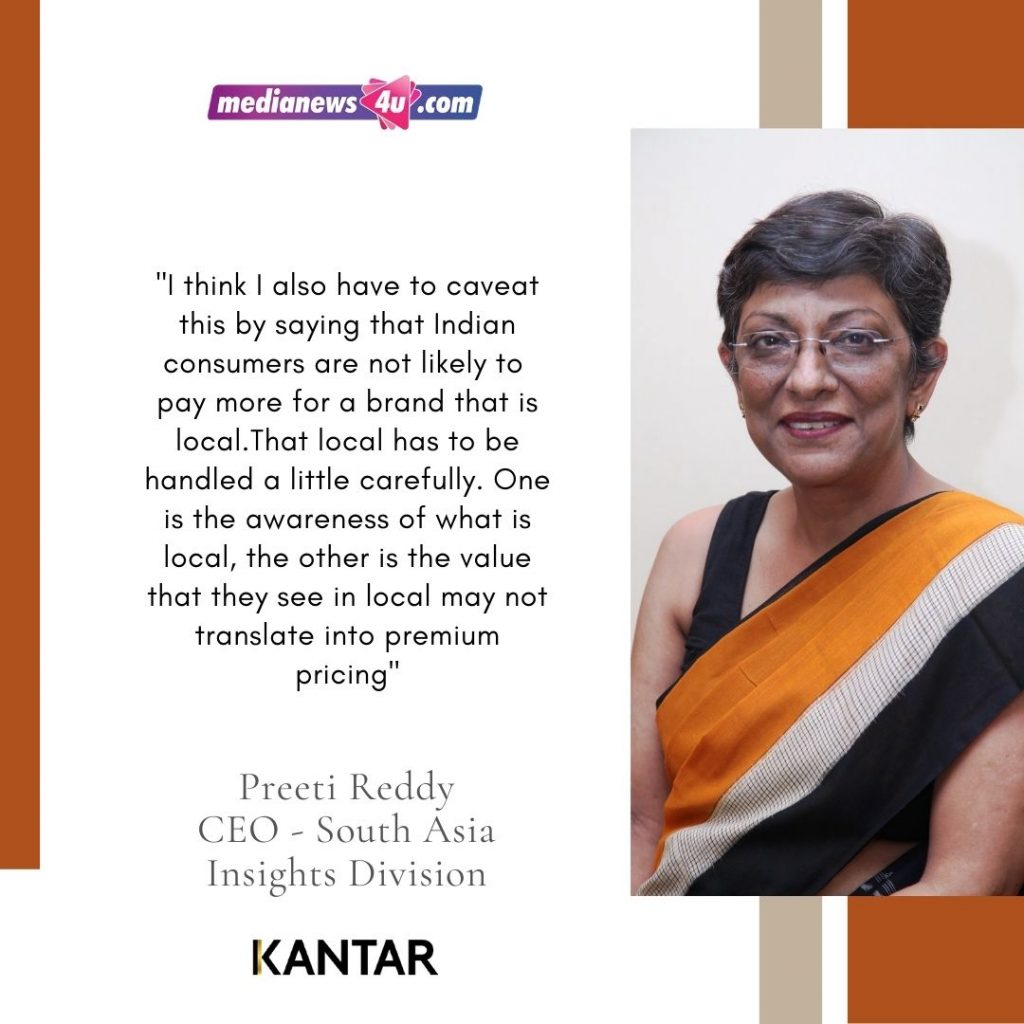
Some brands have fallen off the radar in this crisis due to supply issues, how will they build back the trust with their consumers?
They will have to start being more visible. They have lost connection with the consumer and that consumer has probably moved on or they are not using the category or moved away from that brand. Some of the larger brands will find it easier to come back. For the smaller brands it will be almost like a rebuild strategy, and we would recommend to them, what we all learn in marketing 101, and in BrandZ this is the philosophy we follow. BRANDZ will advise clients to build a meaningful difference and communicate it so that the brand is salient. Meaningful, Different, Salient is what we will recommend.
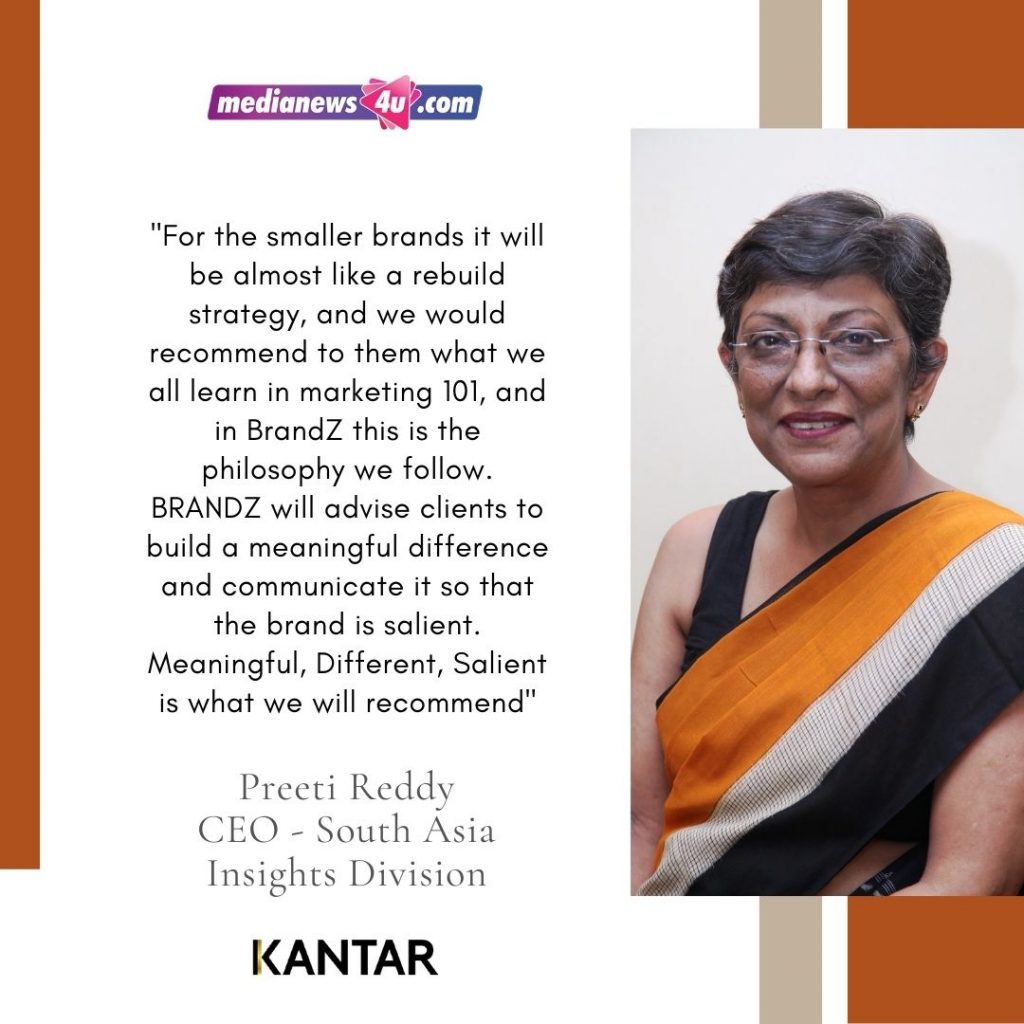
Role of sustainability, shift of brands potential from individual to societal, in the Indian context?
Trust has always been a very important factor, now it has become even more important, but the nuancing of trust has changed. What has happened is that earlier trust was about being an expert or about corporate responsibility, etc. The Tata’s are trusted because they look after their employees, they look after the environment, they have high integrity.
Now, trust is of course about integrity, it is also about inclusion, i.e. treating everyone with respect and as an equal, it is about being open and honest and caring for your customer. An important part of that is that being responsible has risen in importance from over a decade ago, which is, environmental responsibility, responsibility towards the society and responsibility that also implies that you have to treat everybody fairly and treat your employees well.
For a corporate or for a brand it is not enough to provide your shareholder value. You also have to look after the community and look after your various stakeholders. Brands have to demonstrate that and various brands have been doing it for instance, in our BrandZ list Castrol has demonstrated environmental responsibility, Tata salt shows social responsibility and the Tatas and Maruti Suzuki also show employee responsibility, they have schools, housing for employees, and health care. It was always happening and the only thing is that the pandemic has kind of aggressively aggravated this.
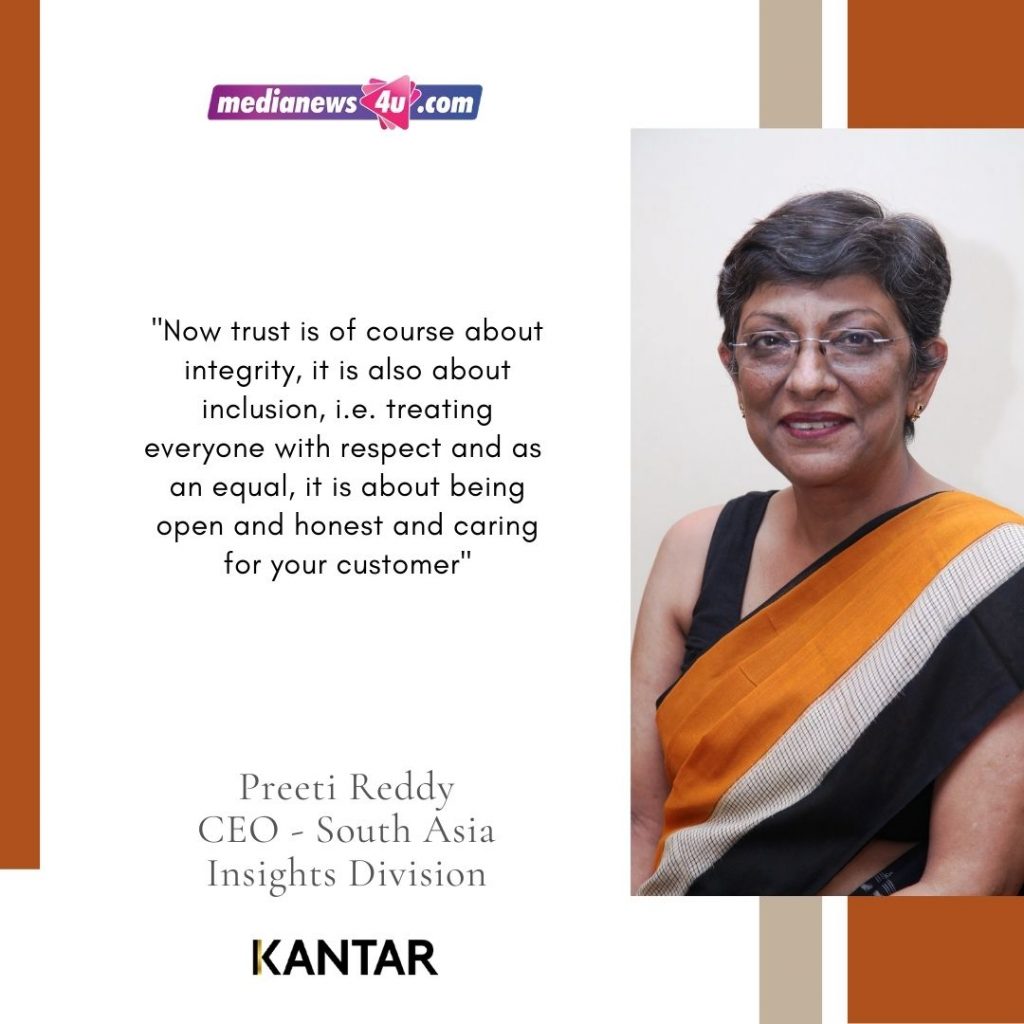
Do you see a spurt of local E- commerce ventures in India now?
I think that was happening and it continues, what we are seeing now is a lot more of this. Local, small entrepreneurial ventures, they use digital and ecommerce as a means to order, route to distribution and to reach out. In this pandemic we are seeing many home cooks, who are offering services online.
Don’t really know if it is ecommerce but a host of online platforms for yoga, gym trainers, beauty tutorials and many more, all the things that you used to do in a physical world which is not viable any longer, is now online. Entrepreneurs setting up a venture, are very astute, they have payment gateways for ordering online. Many online ventures get you fresh produce from the farm directly to you by cutting out the middlemen etc. Antra the Tata venture is all about preserving our handloom heritage by ordering directly from the weaver.

